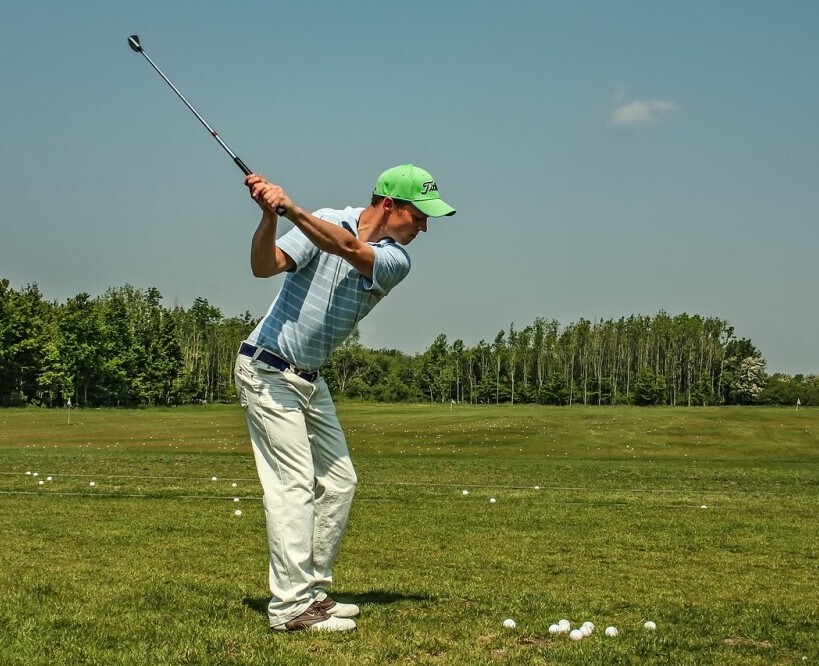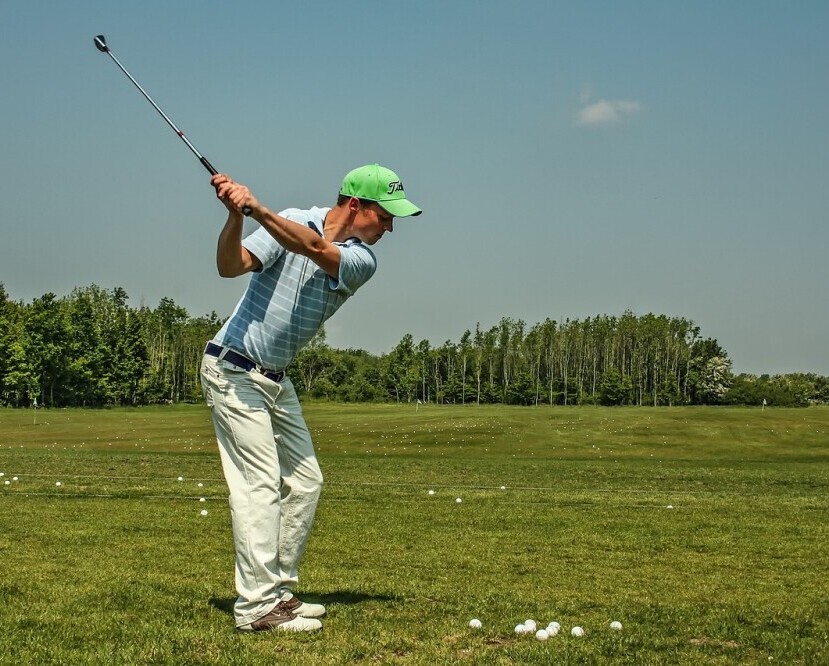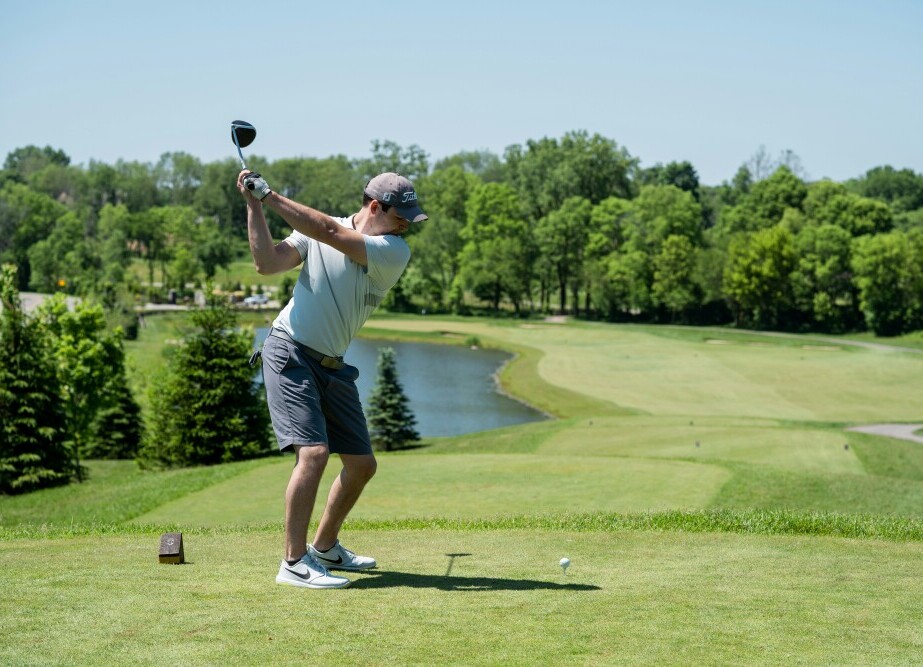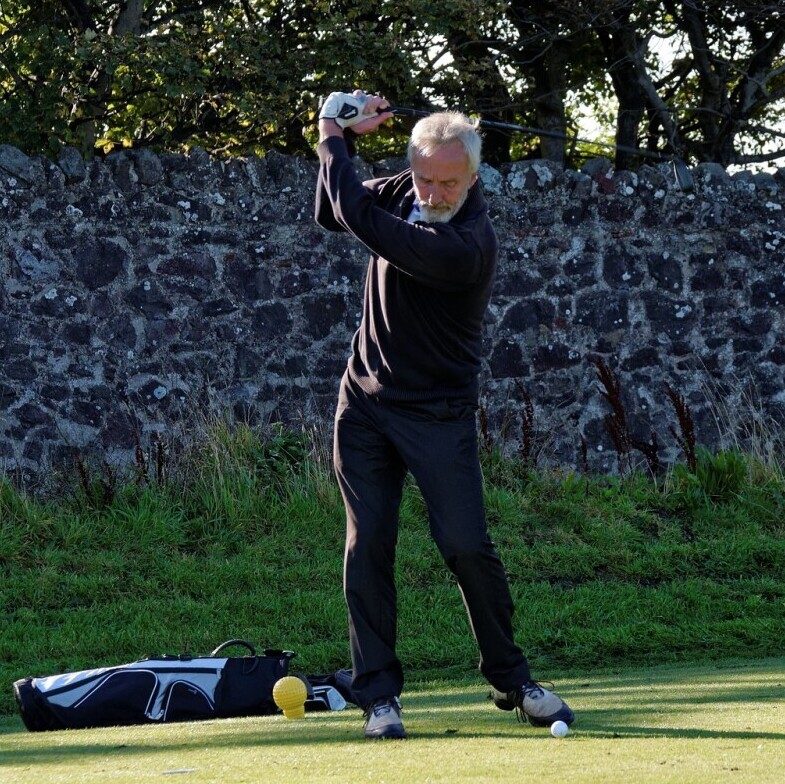What’s A Backswing In Golf?


Fore! Quick note: a few links here are affiliate links. If you snag gear through them, I earn a small commission — no extra strokes added to your game.
A backswing in golf, simply put, is that first part of your golf swing where you pull the club back from the ball to gain enough energy and momentum for the forward strike. It might seem straightforward, but it’s a complex movement that sets the stage for everything that follows. The golf viking is here to give you the lowdown on the backswing.
The backswing holds a key role in dictating both power and precision. Imagine trying to catapult your golf ball to a significant distance without a strong setup; that’s how crucial the backswing is. It’s not just about pulling the club back, but doing so with the right form and mechanics that prepare you for an efficient downswing.
Focusing on the backswing is essential, whether you’re playing a casual round or competing. It allows control over your shot’s direction and distance, ensuring that you can adjust your game for every hole you encounter. A well-executed backswing can lead to more consistent and rewarding play, reinforcing confidence on the course.
Beyond just mechanics, perfecting your backswing can provide psychological benefits too. A consistent backswing leads to muscle memory, allowing you to approach each shot with increased confidence and reduced anxiety. Confidence can often be the secret ingredient that separates an amateur from a pro, even in the mental game of golf.
The backswing sets the stage for your entire swing—if you want to connect it with overall improvement, check out Mastering the Golf Swing for a full breakdown.
Ready to level up your golf game? Click here.

Perfecting the Mechanics: How to Execute a Proper Backswing
Executing a proper backswing isn’t about mimicking one specific form; it’s about finding what works for you within fundamental guidelines. The grip is your first port of call. When holding the club, it should feel secure yet comfortable, not so tight that it constrains your natural movement but firm enough to maintain control.
Your stance is your foundation. Keep your feet about shoulder-width apart, knees slightly bent. This posture aids in flexibility and balance, pivotal aspects of a smooth backswing. Align your shoulders with your feet, allowing for an easy pivot and redistribution of weight during the swing.
As you initiate the backswing, rotate your shoulders while keeping your leading arm straight but relaxed. Turn your torso, not just the arms. Your body should move as a cohesive unit to maintain control and generate power. Think of your backswing as winding up your body like a rubber band. You build up the momentum by scratching your body, and then the momentum is released during the downswing in order to give you the most powerful swing.
Mistakes like bending the leading arm or rushing the shoulder turn can throw off your balance, causing a less controlled shot. The backswing should feel like a deliberate, fluid motion. Rushing it often leads to inaccuracies in the final strike. The entire swing should flow in rhythm, with a seamless transition from backswing to downswing and follow through.
Flexibility cannot be overlooked. Regular stretches targeting your back, shoulders, and hips can greatly increase the range of your backswing, leading to smoother execution. Balance drills are equally beneficial, ensuring you maintain stability throughout the swing, even when pressure mounts. Let’s talk about the speed of your backswing.
Many golfers struggle with an over-the-top motion that begins in the backswing. Learn how to correct it with The Ultimate Guide for How to Fix a Slice.

The Science of Speed: Mastering Backswing Speed
Backswing speed can sometimes feel like the magic ingredient in golf. Mastering it, though, is more science than magic. The speed at which you draw back the club influences the energy transferred to the ball, making it crucial for the distance you aim to cover. Having the right speed can help you sustain momentum throughout your swing.
Finding the right backswing speed is a balance. Too slow, and you might not generate enough power. Too fast, and you could lose control. Using technology like swing analysis tools can offer real-time feedback on your speed, helping you understand where adjustments are needed. The more practice you have, the more comfortable you will be with the speed of your swing.
There are drills designed specifically to help golfers improve backswing pace. One popular method is the ‘Step Drill,’ which trains you to find a natural rhythm by stepping into your shot. This aids in developing a consistent tempo, whether you’re teeing off or putting. Getting the rhythm down will be essential in a perfect swing.
The momentum you generate in your backswing should feel like a smooth build-up rather than a jerky motion. Understanding swing physics can shed light on that. It’s about leveraging centrifugal force – the outward force on a body moving in a curved path – to enhance your shot’s speed and direction.
Enhancing your backswing speed without sacrificing control takes strategy and practice. Regularly practicing with varied club weights can help you find the perfect balance, ensuring you maintain control while pushing the boundaries of your strength and speed. Let’s bring it all together now to get the ultimate swing.
Training aids can help you groove the correct backswing path. Explore Golf Training Aids and How to Use Them to see which tools are most effective.

Bringing It Together: Tips for a Seamless Swing Transition
Linking your backswing and downswing into a fluid motion is where finesse meets technique. The key is in the transition, converting the energy built in your backswing into an efficient forward motion that meets the ball squarely.
Start by allowing your downswing to naturally follow the peak of your backswing. Resist the urge to rush; let gravity assist as you begin the move downward. This ensures the energy transfer remains smooth, avoiding any abruptness. You don’t want any stoppage or hesitation while going from backswing to downswing. It should all feel fluid and as one rhythmic movement.
Observation of seasoned golfers provides valuable insights. Many top players show a near effortless transition, which is the result of years of practice focusing on both timing and rhythm. Watching professional swings can inspire and teach the nuances that might be missing from your own game.
A useful tip is to maintain your focus on the ball even as your body rotates. This helps in sustaining a consistent head position, ensuring your swing path remains true. Practice swings without hitting the ball can help you concentrate on the movement rather than the outcome, enhancing your swing unity.
The backswing and downswing should feel like consecutive parts of a single dance, not two separate movements. Through practice and mindfulness, the transition becomes second nature, crafting a swing that’s both powerful and accurate, setting you up for success on the course. I’ll see you out on the golf course, with that gorgeous backswing leading you to success.
A smooth, controlled backswing is also about balance and mobility—our guide on Golf Fitness for Power, Flexibility, and Consistency shows how to build the right foundation.


